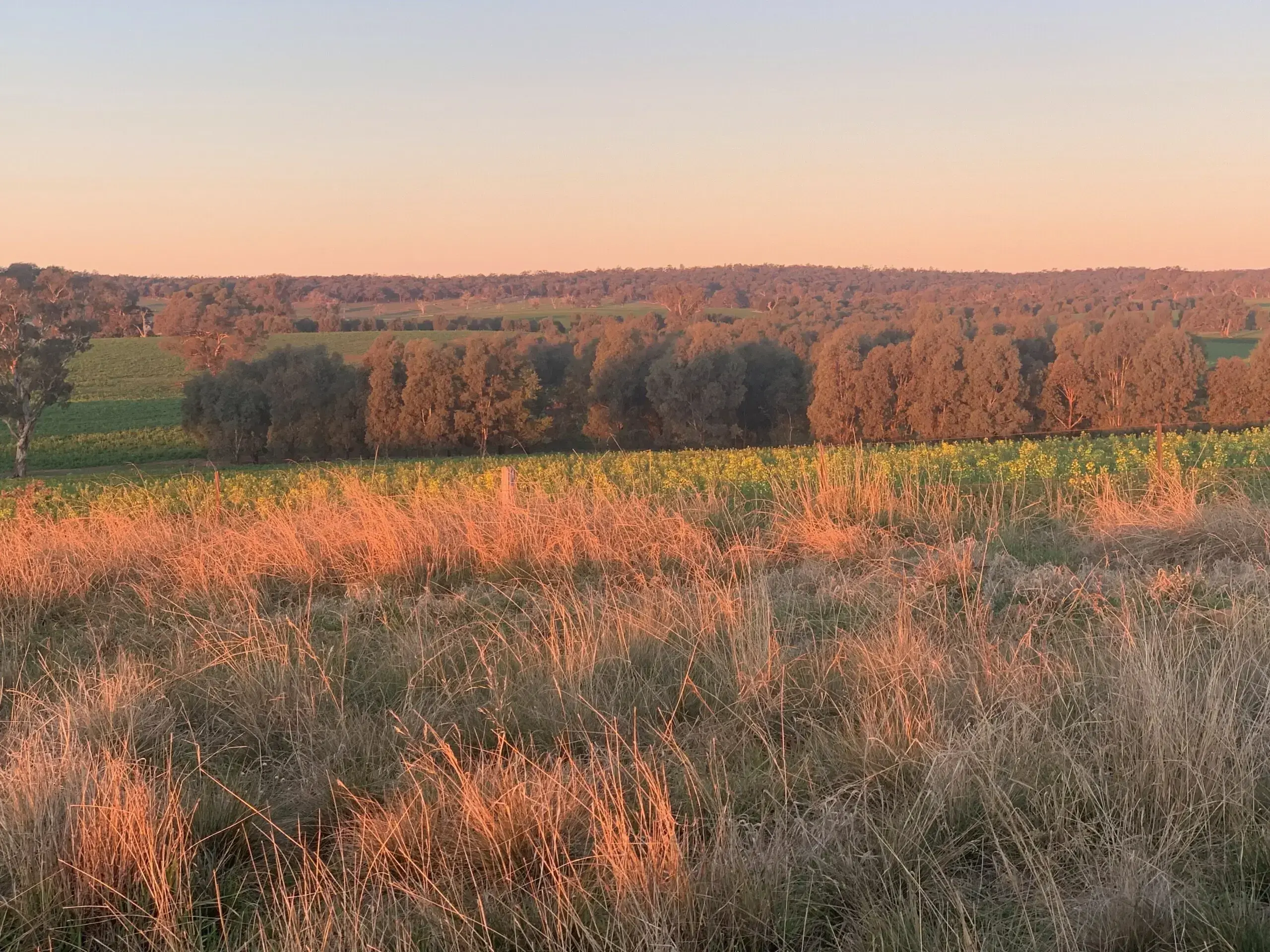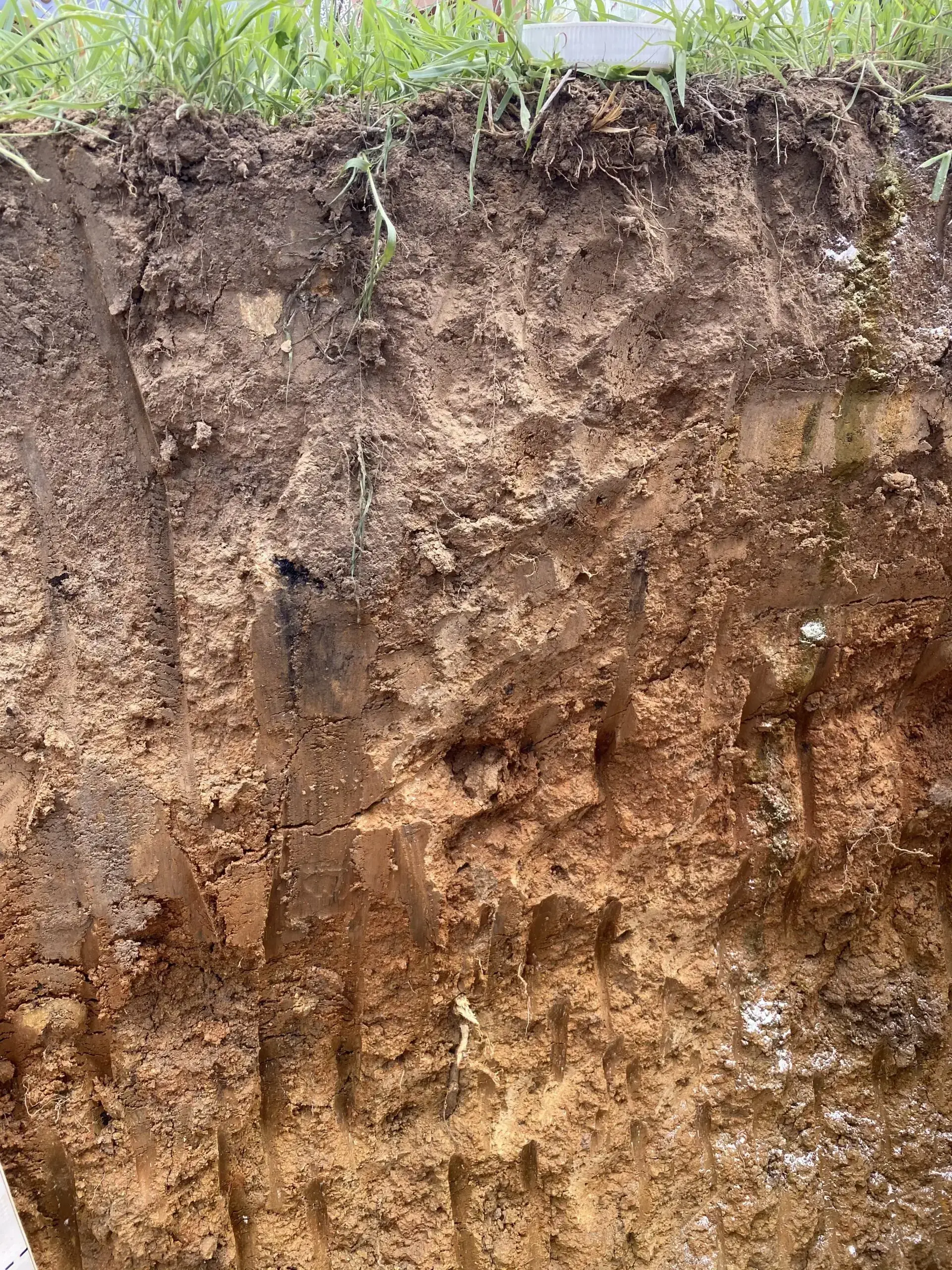‘Milgadara‘
A REGENERATIVE AGRICULTURE CASE STUDY
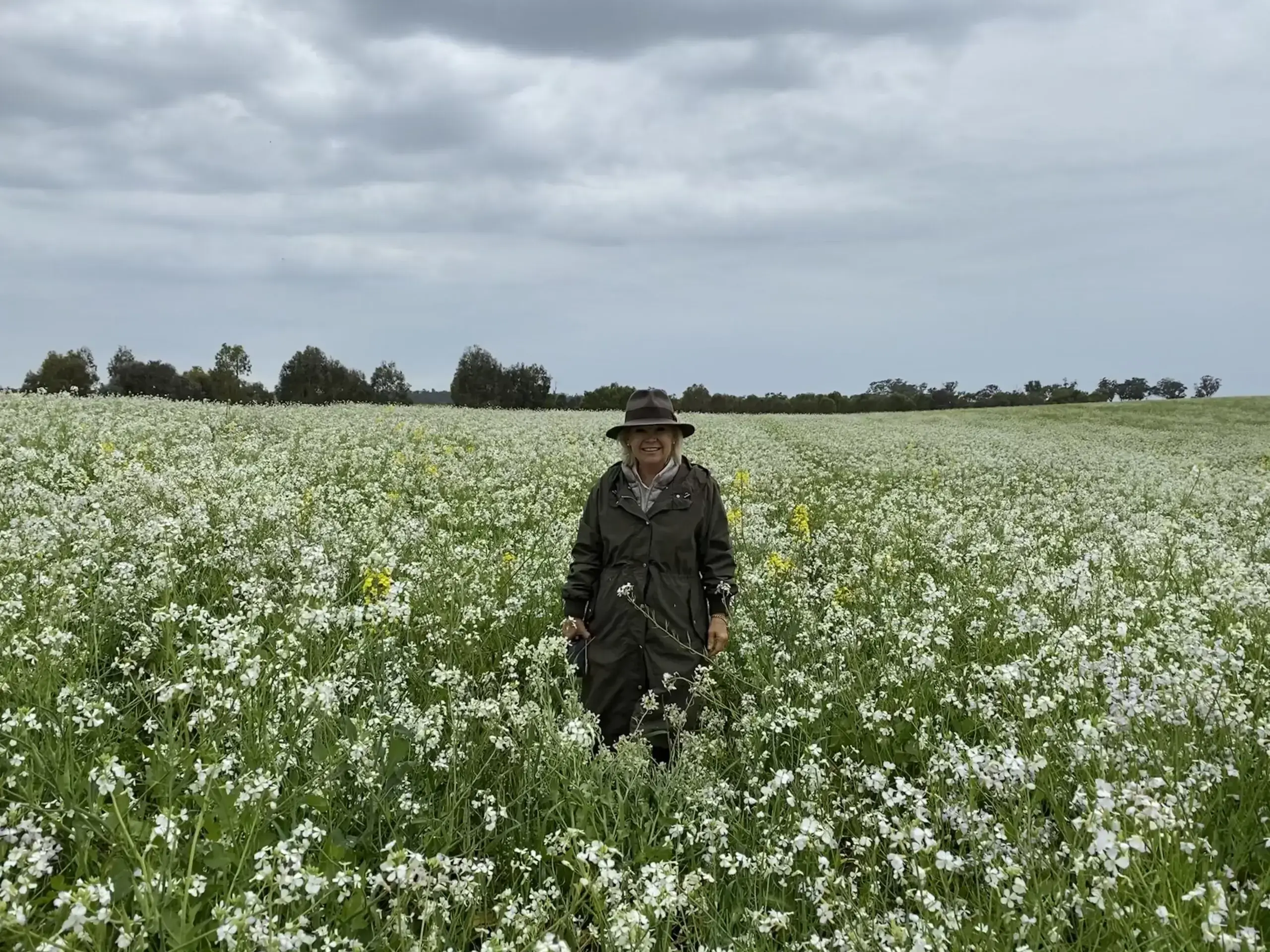
Rhonda Daly
A thriving mixed-farming enterprise on the outskirts of Young, NSW, Milgadara is currently home to three generations of the Daly family as well as prime lamb, cattle and a host of soil micro-organisms. After a major health scare arising from a history of chemical farming, Rhonda and Bill’s mindset shifted and they began to focus on healing both their soils and themselves, producing healthy food and fibre and helping thousands of others in the process.
This case study summary shares the transformation experience of the decision-makers of Milgadara as they shifted from conventional agriculture to an integrated, biological system.
Milgadara is approximately 20 km East of Young, NSW.
FARM FACTS
ENTERPRISE TYPE: Cereal, canola and legume crops; prime lamb production; cattle, humus compost production
PROPERTY SIZE: 1182 ha
LOCATION: 20km east of Young, NSW
ANNUAL RAINFALL: 650mm
ELEVATION: 386m
AGRO-CLIMATIC REGION: Temperate cool season wet
SOIL: Moderately deep stony soils (Rudosols), deeper uniform earths and sands (Kandosols) and texture-contrast non-sodic (Chromosols) and sodic (Sodosols) soils.
SOCIAL STRUCTURE: Operated by owners Bill & Rhonda and home to their children and grandchildren
MOTIVATION FOR CHANGE: Health concerns and disillusion with ‘chemical’ farming
INNOVATIONS:
• Introduction of multi-species crops for nitrogen fixation
• Biologically feeding soil using compost, compost tea and nano colloids
• Marketing of innovations and learnings through separate business
• Balancing stock nutrition using dry lick minerals and simple sugars
KEY RESULTS
• Restored soil health including structure, minerals and biology
• Increased wool staple strength & lambing percentages up to 120%
• Increased crop yields with reduced chemicals, disease free and less pests
• Established separate compost enterprise with client-base of over 2000
Highlights
- Building healthy, living soils now has a central focus at Milgadara. Rhonda and Bill shifted their goal from feeding the plants to feeding the soils, through the improvement of soil organic matter and a focus on soil structure, biology and mineral content.
- Rhonda and Bill see Milgadara as an integrated whole, which must support many different species to thrive, including themselves and their consumers. Their practice of integrating livestock with a diverse cropping rotation and long recovery periods has increased soil biology and ground cover, even during periods of low season rainfall, and produced high quality, healthy, food and fibre.
- While their high-level of responsiveness to the conditions on the farm can seem like hard work to sceptics, Bill and Rhonda feel that things are simpler and more relaxed. Similarly, despite their high economic investment, they receive considerably higher productive outcomes and returns than the Average Farm, resulting in high profit margins.
Video
The Vision
“Heal the soil and help others”- Rhonda Daly, Milgadara
Faced with the diagnosis of chronic meningitis and heavy metal poisoning, Rhonda Daly realised that the chemicals her family had been pouring into the landscape for generations could be seriously endangering her health.
Rhonda felt enlightened by this crisis and committed to healing herself and the landscape and to helping others to learn from her devastating experiences.
Rhonda and her husband Bill, had been questioning conventional farming for nearly a decade noticing that Milgadara required more and more chemical inputs each year, that their produce had become watery and their soils increasingly lifeless. After Rhonda’s diagnosis, they realised that it was all interconnected and that in order to heal themselves, they needed to first bring the life back into the soil.
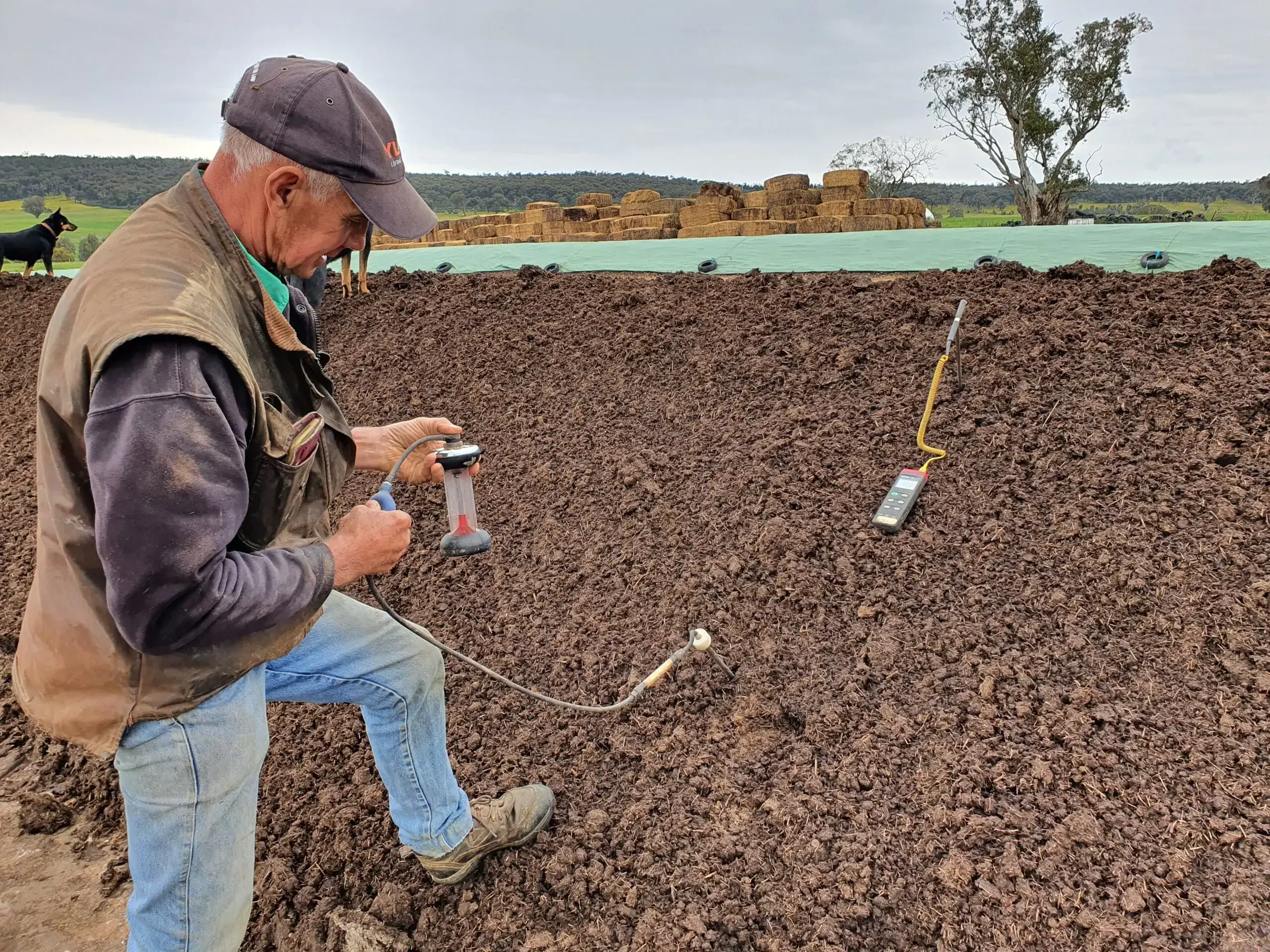
Temperature, oxygen and moisture checks are performed daily on the compost.
The Approach
“I have an intention… to create this harmonious environment for all species to live on the farm”- Rhonda Daly, Milgadara
Rhonda and Bill saw the necessary changes as something that was ‘not outside of yourself, it is very much inside of ourselves’. They committed to learning everything they could about alternatives to chemically-based agriculture, investigating biological farming and biodynamic farming through workshops, field days and courses both in Australia and abroad. Ultimately, they decided to take an approach they later came to call ‘Integrated Agriculture’.
The Daly’s integrated approach to agriculture included a foundational focus on the health and quality of their soils. They developed a depth of understanding of the role of soil organic matter in improving soil structure and increasing the availability and retention of water and nutrients in their soils. As a result, they shifted their focus from feeding the plants, to feeding the soil.
To ‘put the life back into the soil’, Rhonda and Bill actively encouraged soil micro-organisms to flourish with the addition of small amounts of highly potent composts, compost teas and biodynamic mixtures. Believing that ‘you can pour nutrients on the soil forever and a day, but they’re not going to be really useful because you’re just feeding… drug addict soils’, they prioritised developing soil structure and actively monitored soil nutrients and fertility at regular intervals, making adjustments to respond to the needs of the natural system.
Building on these active soil interventions, a rotation of livestock and multi-species cropping with long rest periods was implemented across the landscape. Not only did this ‘fix’ nitrogen in the soil, but it also led to an increase in the amount and resilience of ground-cover. The Dalys further complemented this work by fencing off gullies and planting shelter belts. As a result, soil hydrology improved and began to act as a below-ground ‘dam’ across the landscape, retaining soil water where it was needed to support crops and pastures.
As with the management of their soils, the stock of prime lamb and cattle was managed responsively to the system. Stock nutrition was balanced using dry lick minerals and simple sugars. Similarly, rather than shearing sheep at calendar intervals, they were shorn when wool reached 70mm. This reduced fly strike and eliminated the need for sprays and crutching.
A desire to help others, a recognition of the increasingly high quality of their produce and an understanding that ‘it still has to be profitable’, led the Daly’s to begin marketing their produce and innovations. Not only were they able to achieve a high on-farm profit margin, they were also able to diversify their income with an entirely separate side business, ‘YLAD Living Soils’, that shared the learnings and innovative products they developed on Milgadara, such as potent composts.
Rhonda and Bill opened their farm and their experiences to the broader community, inviting them to experience their integrated approach to agriculture. They treat their clients like family and invest significant time in helping them along their personal journeys. Clients stay in touch, sharing their own ongoing experiences, and visitors to the farm are immersed in the landscape through workshops and field days, frequently commenting on the ‘beautiful energy’ of the place.
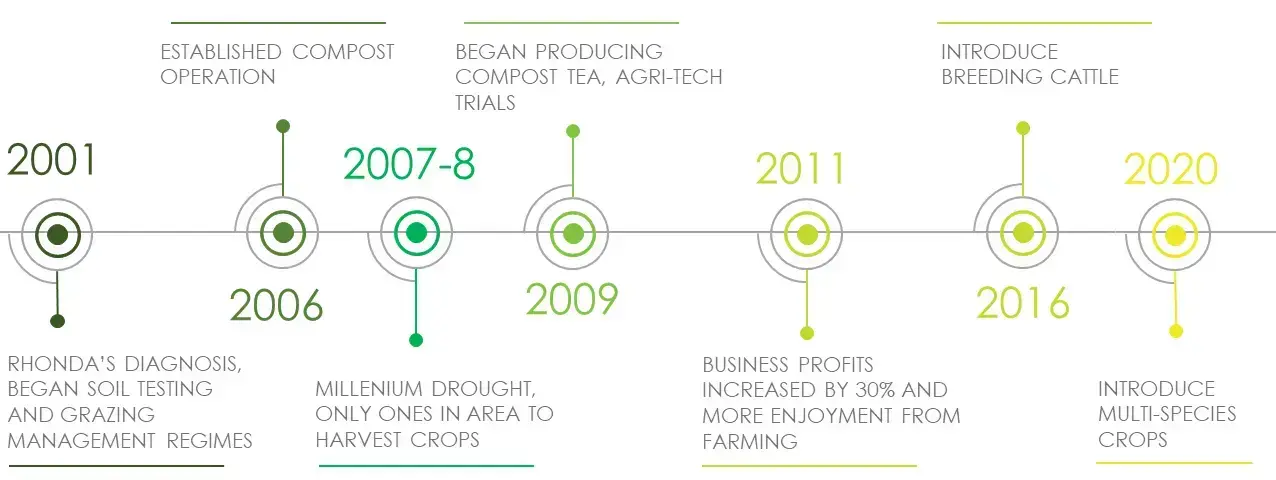
Above: Timeline of Milgadara transformation
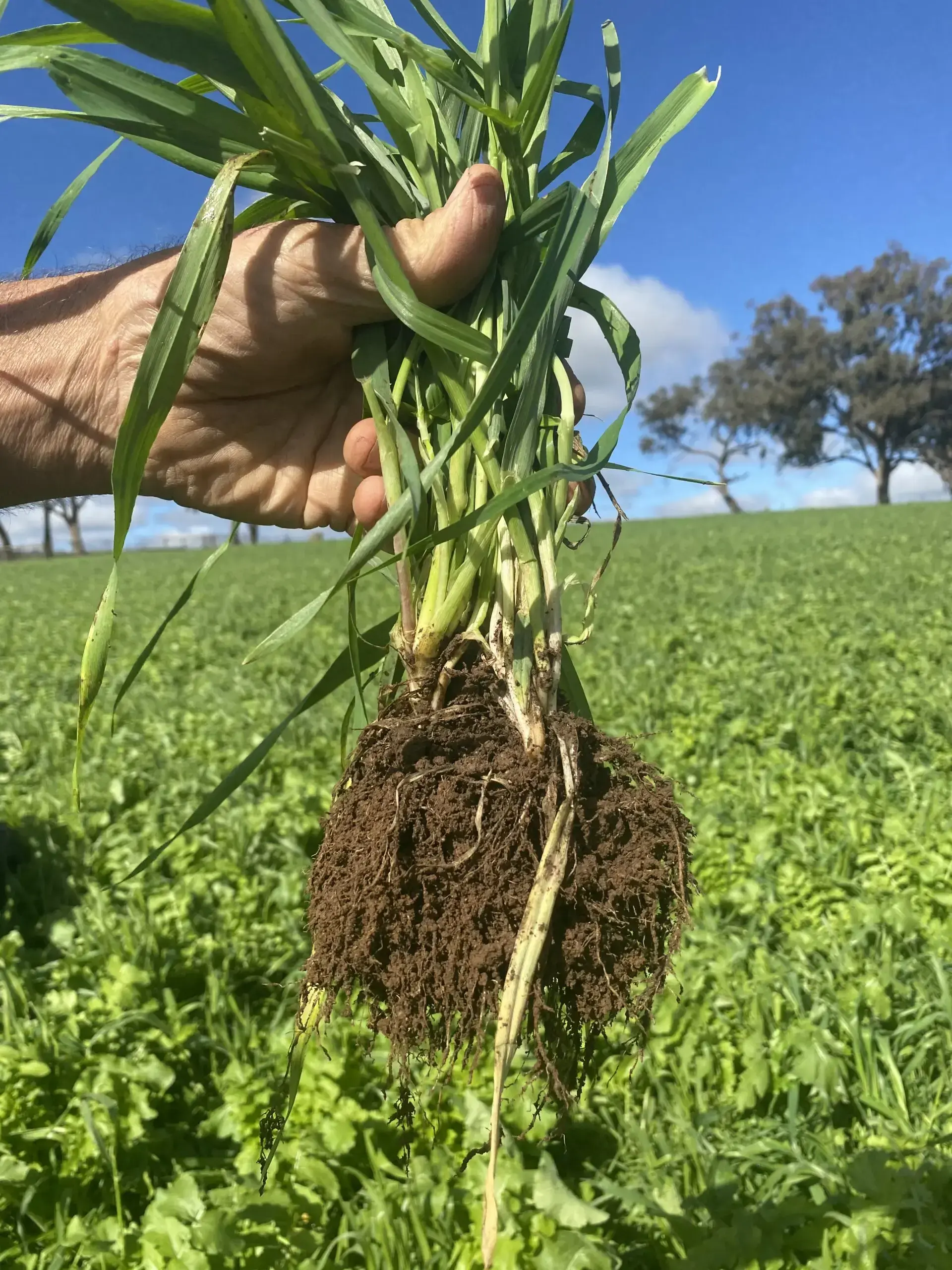
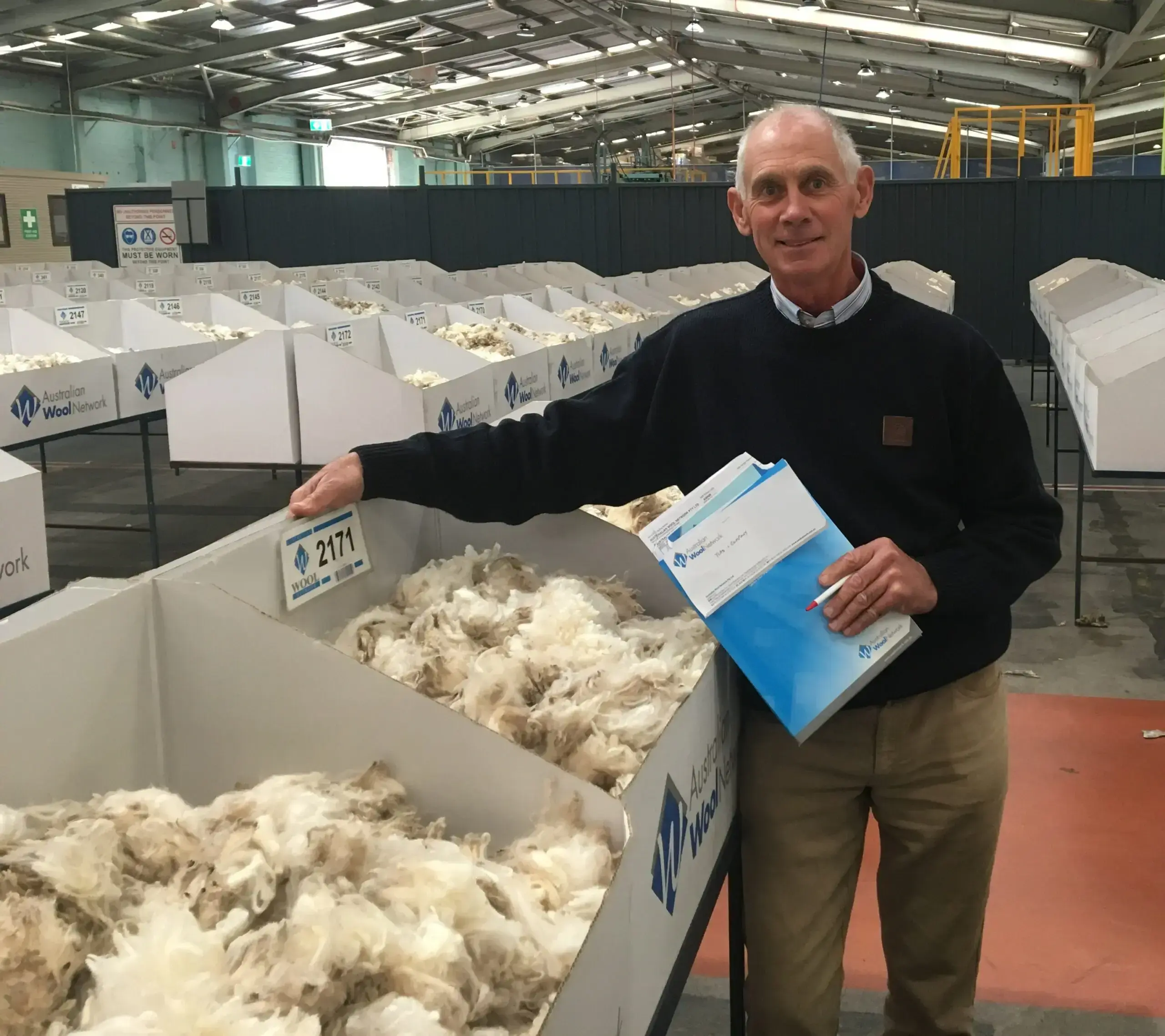
Wool production is a big contributor to profitability on Milgadara with lambing percentages and wool staple strength up 150%.
The Result
“The simplification of the system allows your mind to relax, you’re not putting fires out all the time”- Bill Daly, Milgadara
Rhonda and Bill successfully restored their soils to life, increasing soil organic matter and improving ground cover and hydrology. This supports a diverse range of successfully integrated enterprises such as livestock and cropping as well as a separate composting side business.
The enterprises consistently produce high quality products with improvements to key performance indicators such as lambing percentages, wool staple strength and canola proteins, enabling them to achieve high profit margins.
The farm is home to three generations of Dalys and reaches thousands of others through their business and healthy produce.
Key Indicators for Milgadara
Key Ecological Indicators
Two indicators; % soil organic matter and % ground cover; suggest increased resilience to major climatic events. Regular applications of humus compost are part of the Daly’s biological farming regime for pastures and cropping. Extensive soil tests across the intensively managed areas of the farm show that average soil organic matter has increased from 2010 to 2019 (fig. 3). Over the same period remote sensing imagery of the farm shows that average ground cover has slightly increased from 60% to 62% (fig. 4). Both soil organic matter and ground cover levels have remained high even during periods of strongly below average seasonal rainfall in 2017-19.

Key Soil Indicators
A number of site and soil characteristics were observed in the 135 Acre paddock, representing a typical mid slope, texture-contrast soil at Milgadara. The Daly’s have overcome the natural landscape limitations of the granodiorite parent material on which the soil has formed by improving the ability of the topsoil to retain nutrients (as represented by the cation exchange capacity fig. 7) and the general nutrient status of soils (e.g. total soil nitrogen fig. 5). In order to achieve this, they increased their total carbon (fig 6) through the addition of soil organic matter (fig. 3 above).
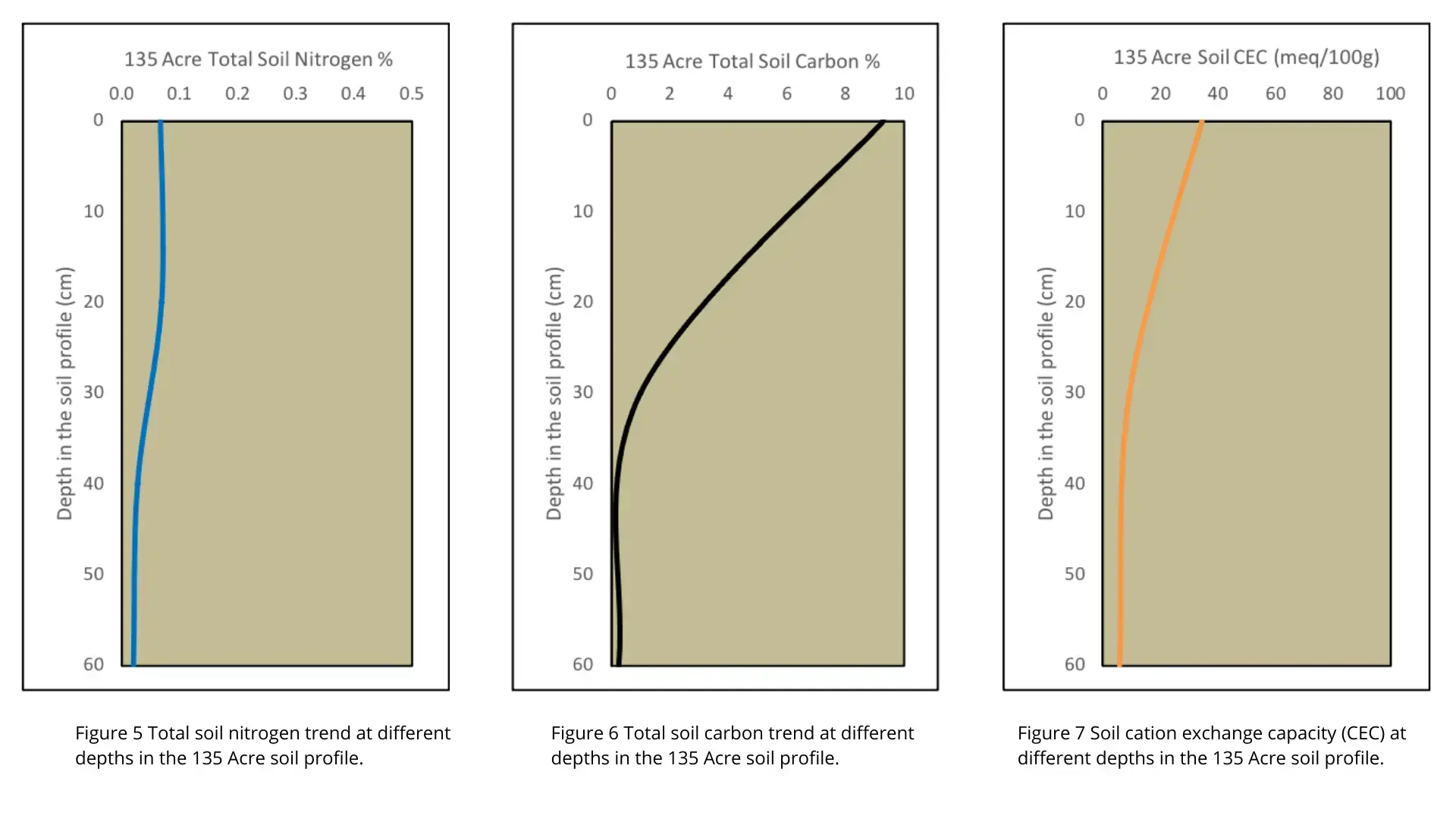
Key Economic Indicators
Rhonda and Bill invest significantly in Milgadara with a focus on soil health. Compared to the average Mixed Sheep farm, they spend more on seed and soil amendments including compost (e.g. fig 8). However, these practices have resulted in higher returns through stronger productivity and sale prices than the benchmark. As a result, Milgadara reports higher profits, even during periods where the Average Farm reports an overall loss (fig 9).

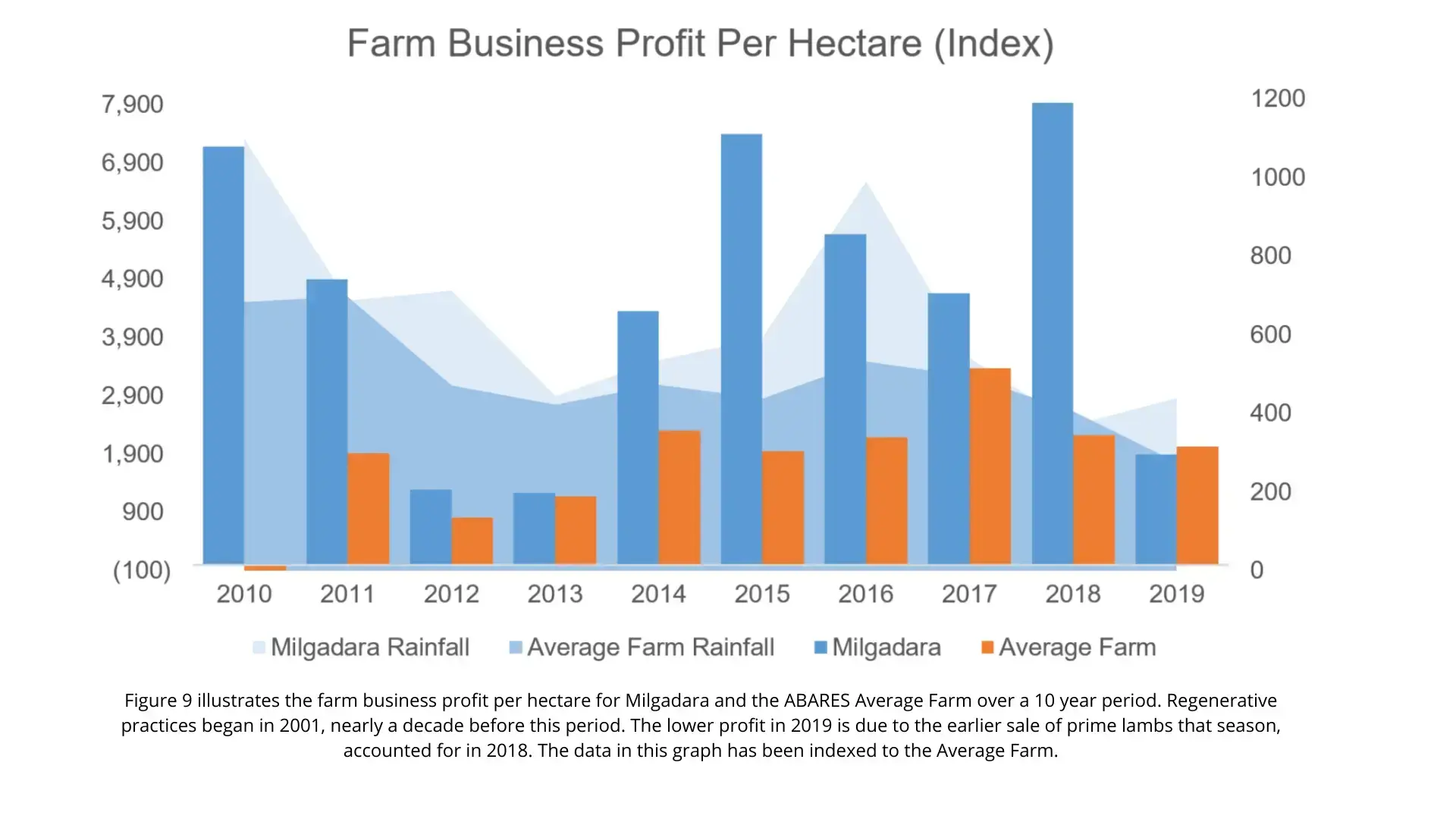
Conclusion
Rhonda and Bill Daly restored the soils of Milgadara to life, enabling the landscape to heal and to provide a home for three generations of Dalys, as well as reaching thousands of clients and consumers. Their focus on ‘feeding the soil’ and experiments in building soil quality and health have not only enabled them to increase the amount and resilience of their ground cover, but also to market their learnings and innovations in an entirely separate business venture – ‘YLAD Living Soils’.
The integrated approach to agriculture on Milgadara supports the vitality of all species living on the farm and harmoniously produces both livestock and crops on the same landscape. Productivity and quality have increased and become more resilient, leading to profit margins that are consistently well above those of the average farm.
While their high-level of responsiveness to the conditions on the farm can seem like hard work to sceptics, Bill and Rhonda feel that things are now simpler and more relaxed. They remain passionate about their mission to heal the soil and help others and continue to experiment and investigate new ways to respond to the landscape, of which they are very much a part.

Three generations of Dalys live on Milgadara. These are Bill and Rhonda’s grandchildren showing off the tillage radishes that form a key part of the multispecies planting.
Find out more
The Soils For Life case study program provides interwoven, evidence-based accounts of land manager and landscape change and regeneration. Further information about this case study including methods, detailed results and discussions can be found in the associated full reports:
SOILS FOR LIFE EXISTS TO SUPPORT AUSTRALIAN FARMERS IN REGENERATING SOILS AND LANDSCAPES: TO BUILD NATURAL AND SOCIAL CAPITAL AND TRANSFORM FOOD SYSTEMS. FIND OUT MORE ABOUT SOILS FOR LIFE OR OUR CASE STUDY PROGRAM HERE.
This project is supported by Soils for Life, through funding from the Australian Government’s National Landcare Program.




